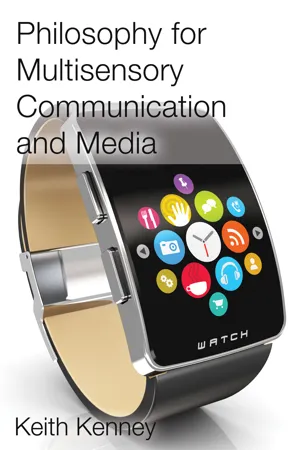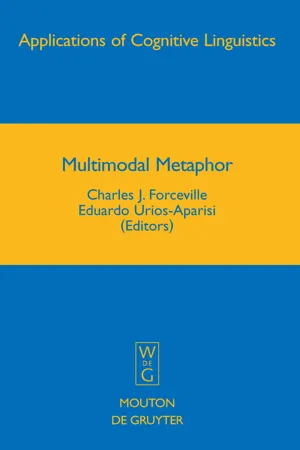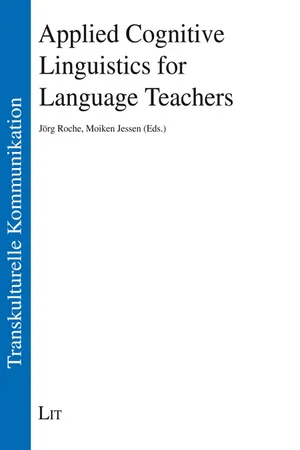Languages & Linguistics
Gustatory Imagery
Gustatory imagery is a literary device that uses vivid descriptions of taste and flavor to create sensory experiences for the reader. It is often used in poetry and prose to enhance the emotional impact of a scene or to create a more immersive reading experience. By using gustatory imagery, writers can transport readers to different times and places, and evoke powerful emotions and memories.
Written by Perlego with AI-assistance
Related key terms
1 of 5
3 Key excerpts on "Gustatory Imagery"
- Keith Kenney(Author)
- 2016(Publication Date)
· 6 · GUSTATORY MEDIA In the previous chapter I explained how we sniff as well as how much we learn by sniffing. I also explained that olfaction is associated with emotions and memories because all three are part of the limbic system. Although I present- ed the challenges posed by the olfactory sense, I also described how olfactory media are beginning to play useful roles. In this chapter I write about the gustatory sense, which means the expe- rience of flavor. After a phenomenological description of gustation, I explain the ongoing discussion among philosophers about whether flavors (and scents) have cognitive meanings or if they simply provide pleasurable sensations. To explain this discussion, I use the example of tasting wine. Then I continue the discussion of the shifting line between pleasure and pain, which I began in the section on sadomasochism and painful games. This time, however, I write about how disgusting foods can become delicious. I had introduced the concept of so- cial aesthetics in Chapter 1, and now I use wine festivals and Songhay dinners as gustatory examples of social aesthetics. I also explain a “stomach-centered” philosophy and how it contrasts with the far more dominant visual philosophy. Gustatory media is less developed than olfactory media, but progress is be- ing made by Nimesha Ranasinghe, an engineer at the National University of Singapore, and his team (2012). They are developing a digital taste simulator 110 philosophy for multisensory communication and media that uses electrical current along with variations in temperature in order to trick people’s brains into thinking they’ve just encountered something tasty. To experience flavors, people must place two silver electrodes on their tongue. Through these electrodes, three properties of electric current as well as heat are delivered to the tongue.- eBook - PDF
- Charles J. Forceville, Eduardo Urios-Aparisi, Charles J. Forceville, Eduardo Urios-Aparisi(Authors)
- 2009(Publication Date)
- De Gruyter Mouton(Publisher)
A case in point is image metaphor , which involves the mapping of concrete, topological information across disparate domains (for a detailed discussion on this type of metaphor see Caballero 2006). Another conspicu-ous – albeit often neglected – trait of metaphor is that it can be rendered in 80 Rosario Caballero modes of expression other than language (e.g. pictures, sounds, or gestures) as well as involve various modalities or senses (e.g. vision, hearing, touch, or taste). An extreme example of the latter is synesthetic metaphor , which maps information across sensory domains or modes (Day 1996; Ramachandran and Hubbard 2001; Yu 2003). Both the concreteness and multimodal quality of some metaphors are im-portant for discussing the figurative language used by critics in TNs. Thus, the raison d’être of the genre is to put olfactory and gustatory experiences into words. Yet, although smell and taste are two of the most basic and first-hand – i.e., concrete – human experiences, the verbalization of the subtle differences among the vast array of aromas and flavors at our disposal is no easy matter. Figurative language compensates for the poverty of the lexicon in this respect: in general, the expressions used in wine commentary denote entities and qualities concrete enough to be of use in this difficult context. Most expressions, however, defy Lakoff and Johnson’s claims that “human beings find phenomena they can see, hear, feel, taste and/or smell easier to understand and categorize than phenomena they cannot. It is perceptibility that makes the former phenomena concrete, and the lack of it that makes the latter abstract” (1999: 249). In fact, very often the situation in winespeak seems to be the reverse: wine critics need to draw upon experiences other than smell and taste to categorize and verbalize these. - Jorg Roche, Moiken Jessen(Authors)
- 2023(Publication Date)
- LIT Verlag(Publisher)
95 3 Linguistic Imagery It is astounding to see how important the role of images is in our mind. Not only in terms of modern media (visual turn) but also in the realm of lan- guage. As imagery in language is so prevalent in everyday lives the present chapter will concentrate solely on language imagery and its special role in cognition and language acquisition. To illustrate the prevalence of images in language, let us look at a couple of expressions such as to solve a prob- lem or to break someone’s heart. If we took the expressions at face value, we would have to expect a chemical experiment on an issue (in the sense of the dissolution of something in an acidic solution) or a physical assault on someone’s heart. In the first part of the chapter, we will explore how such metaphors and metonymies work and how traditional linguistics describes and explains these phenomena. Subsequently, we will discuss cognitive mechanisms fundamental to the ubiquitous imagery use in language We will also elab- orate on metonymy, a linguistic element quite similar to metaphor. The conceptual metaphor theory will be presented and compared with the tra- ditional (literary) perspective on metaphors. We will touch on the concep- tual metaphor’s ability to represent mappings between cultural domains, and we will address the role of imagery for the way we think. It will be shown how abstract concepts can be understood through images. Finally, we will explore the role of imagery with respect to the processes of knowledge construction, knowledge representation and knowledge storage in a learner’s mind. 96 3.1 Linguistic Imagery and the Conceptual Metaphor Natalya Furashova, Moiken Jessen & Katsiaryna EL-Bouz Sometimes, people are not straightforward with what they mean to say, and – on the other hand – words are not always used to express their literal meaning. We could, for instance, say about a person that he is cun- ning or clever.
Index pages curate the most relevant extracts from our library of academic textbooks. They’ve been created using an in-house natural language model (NLM), each adding context and meaning to key research topics.


